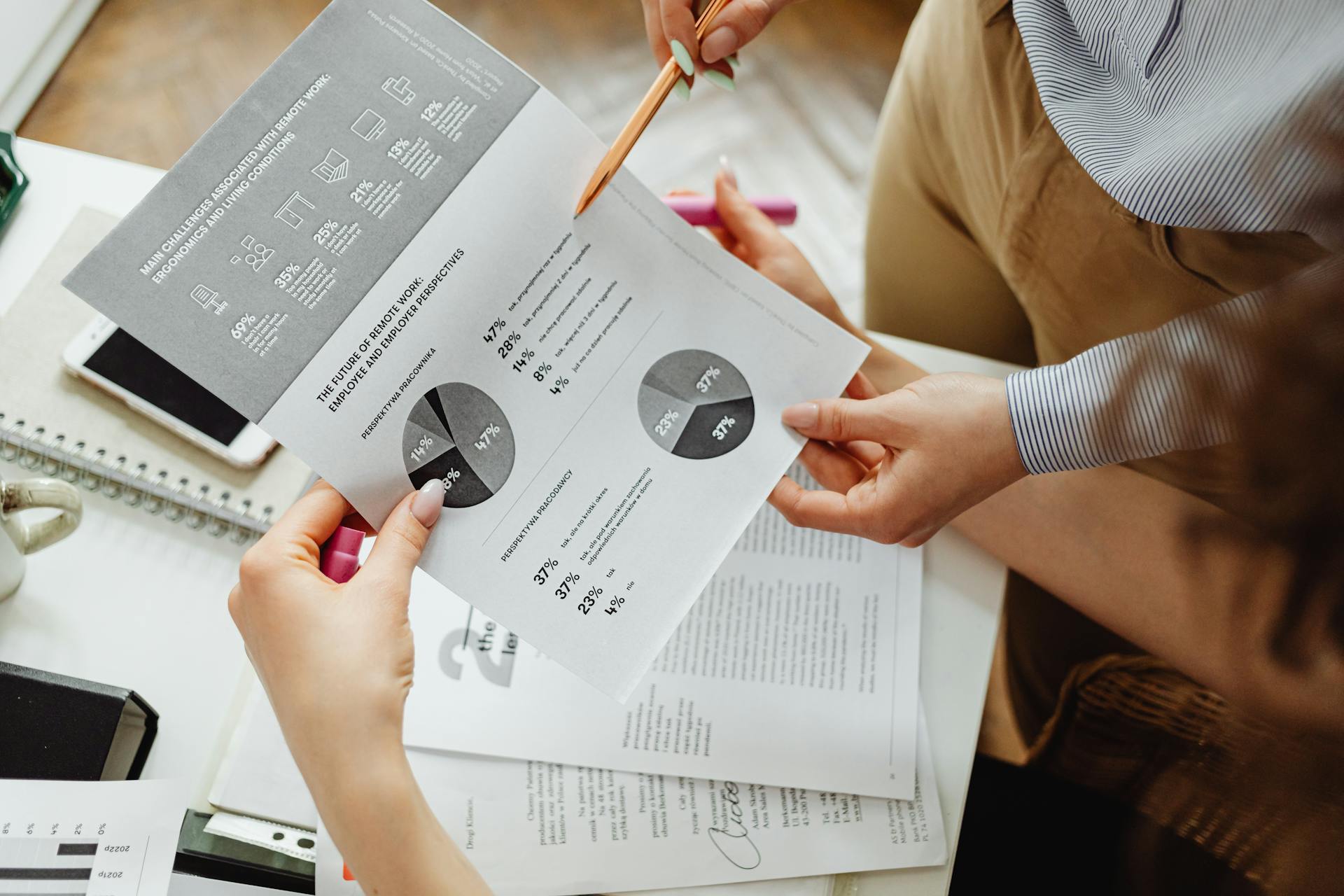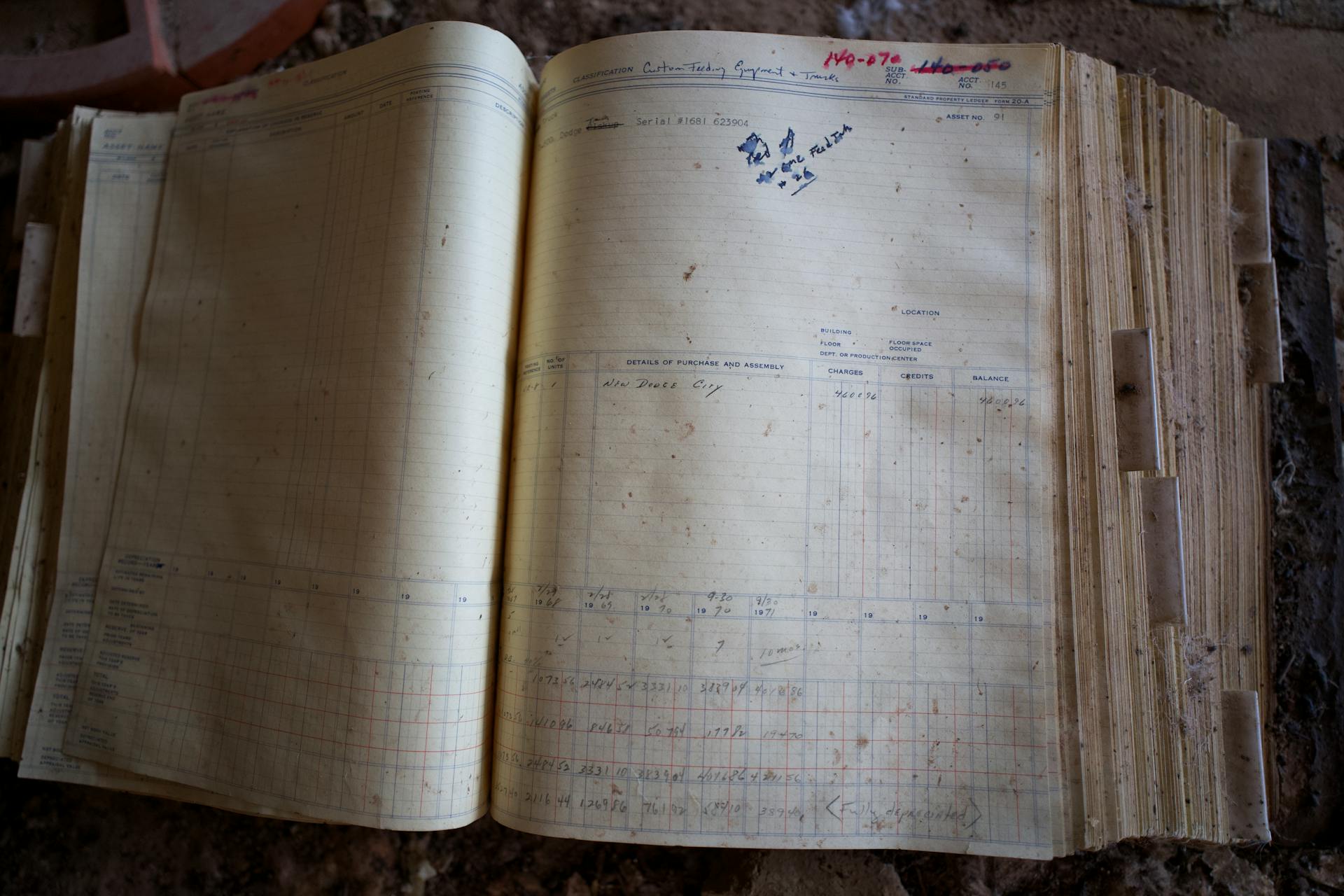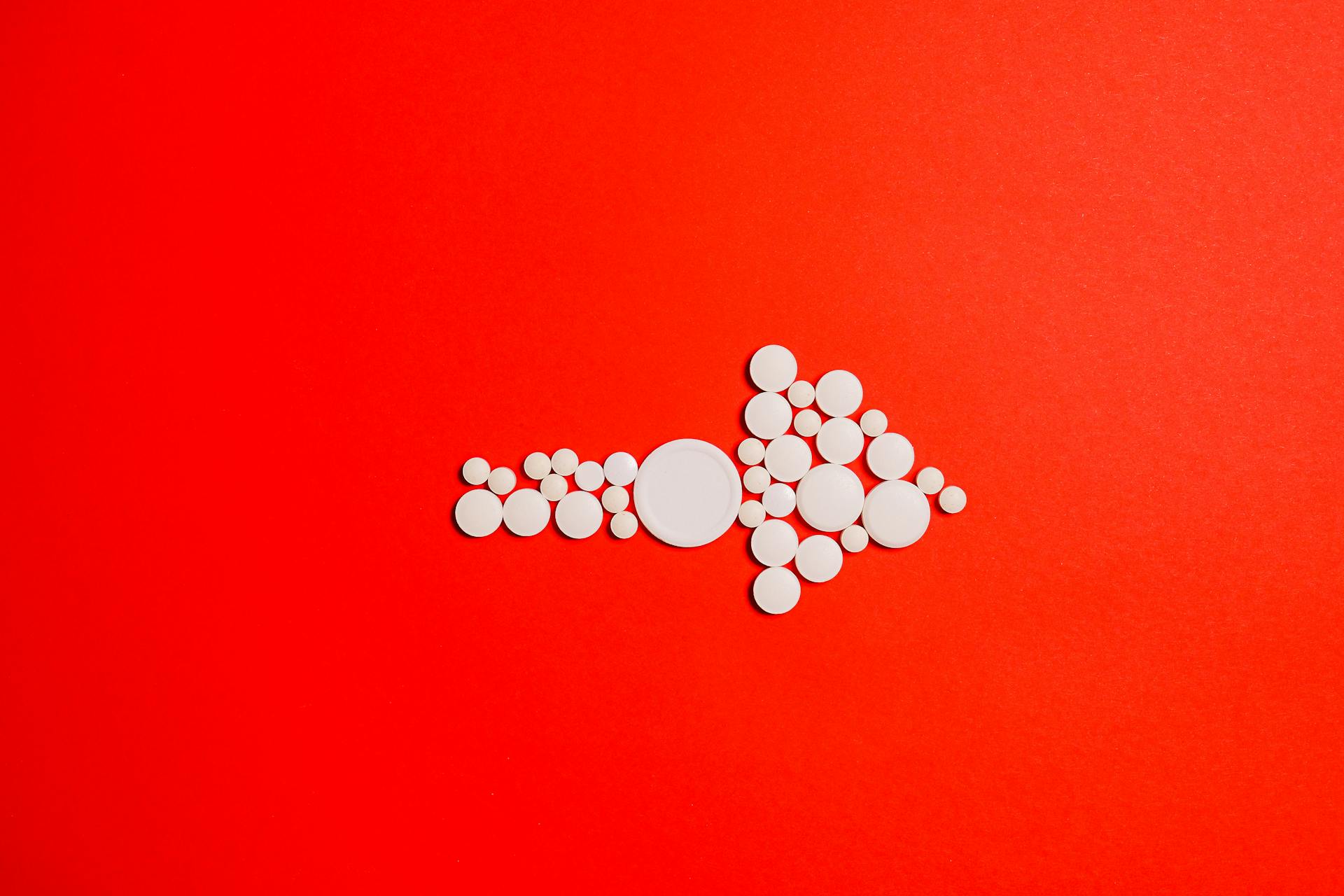
Accumulated depreciation is a critical component of financial statements, and it's essential to understand where it goes. It's recorded on the balance sheet.
In the balance sheet, accumulated depreciation is subtracted from the cost of the asset, resulting in the net book value. This is a fundamental principle of accounting.
The net book value is the asset's value after depreciation, and it's used to calculate the asset's remaining useful life.
Worth a look: Where Do Prepaid Expenses Appear on the Balance Sheet
What Is
Accumulated depreciation is recorded on a company's general ledger as a contra account and under the assets section of a company's balance sheet as a credit.
It reduces the value of the company's fixed assets, showing how much of the asset has been written off. The original price of an asset determines its current value on a balance sheet, and accumulated depreciation is the total of all depreciation applied to an asset since its usage began.
The amount of accumulated depreciation for an asset or group of assets will increase over time as depreciation expenses continue to be recorded. This is because the total decline in value charged against an asset since it was pressed into service is referred to as accumulated depreciation.

Accumulated depreciation is listed as a credit under fixed assets on a balance sheet, revealing the useful life remaining in the asset. As an asset is eventually sold or retired from use, reducing its value to $0, the accumulated depreciation associated with that asset will be removed from the company's balance sheet.
Consider reading: Accumulated Depreciation Balance Sheet Classification
Normal Balance and Accounting
Accumulated depreciation has a normal balance, which is a credit balance, indicating the overall amount of depreciation expense recorded for an asset since its acquisition.
This credit balance signifies the decrease in the carrying value of an asset on the balance sheet, as assets depreciate and their value diminishes.
Accumulated depreciation is a contra-asset account, meaning it offsets the original cost of an asset, and its balance is subtracted from the original cost to calculate the net book value.
Here's a breakdown of how accumulated depreciation is recorded on the balance sheet:
Accumulated depreciation can be shown separately for each class of assets, such as furniture, equipment, vehicles, and buildings, or as a single line item on the balance sheet.
Normal Balance

The normal balance of an account is crucial in accounting, and one of the most important is the accumulated depreciation normal balance, which is a credit balance.
Accumulated depreciation is a contra-asset account that shows the decrease in the carrying value of an asset on the balance sheet.
As assets depreciate, their value diminishes, and this reduction is shown through accumulated depreciation, which is subtracted from the original cost of the asset to calculate the net book value.
The net book value is the amount of the asset's cost that has been used up or depleted over time, and it's essential for accurate financial reporting.
Accurate reporting of a business's financial position relies on the normal balance of accumulated depreciation, which ensures that the balance sheet accurately reflects the true economic value of assets.
The normal balance of accumulated depreciation enables proper alignment of expenses with revenues in the income statement by recognizing depreciation expense over the useful life of the asset.
Accumulated depreciation's normal balance is a credit balance, indicating the overall amount of depreciation expense recorded for an asset since its acquisition.
Intriguing read: Do You Subtract Accumulated Depreciation from Assets
Debit vs Credit

In accounting, debits and credits are the building blocks of financial transactions. A debit is an entry that increases an asset account or decreases a liability or equity account.
To record accumulated depreciation, you'll debit depreciation expense and credit accumulated depreciation. When an asset is sold or retired, you'll debit accumulated depreciation to remove the original cost of the asset and its total depreciation.
Here's a simple way to remember the difference: assets are debited, liabilities and equity are credited, and expenses are always debited.
Intriguing read: Equity Account Debit or Credit
Balance Sheet
On the balance sheet, accumulated depreciation appears as a credit balance just under fixed assets. This is a key concept to understand in accounting.
In most balance sheets, accumulated depreciation is shown as a single line, but some financial statements may break it down by asset type. For example, Poochie's Mobile Pet Grooming might show it separately for each class of assets.
Accumulated depreciation is the cumulative total of all depreciation that has been taken as an expense on the income statement from the time the company acquired the asset until the date of the balance sheet.
Here's how the asset section of a balance sheet might look for a company like Poochie's:
In this example, the accumulated depreciation is shown separately for each class of assets, such as equipment and vans.
Finding and Understanding Accumulated Depreciation

Accumulated depreciation can be found on a company's balance sheet.
It's usually shown just below the fixed assets section, but some companies list it separately, while others don't list it at all.
If a company doesn't list accumulated depreciation separately, their balance sheet might say "Property, plant, and equipment – net", which shows the book value of their assets, net of accumulated depreciation.
You can often find more details about the book value of a company's assets and accumulated depreciation in the financial statement disclosures.
Accumulated depreciation is an important part of a company's financial picture, and finding it can help you understand their overall financial health.
By looking at the balance sheet, you can get a clear picture of a company's accumulated depreciation and how it affects their financial situation.
Related reading: Liabilities in Accounting List
Accumulated Depreciation and Amortization
Accumulated depreciation and amortization work in the same way as accumulated depreciation; they are all contra-asset accounts.
Accumulated amortization and depletion are used for intangible assets and natural resources-related assets, respectively. They are credited when amortization or depletion expense is recorded for the year.
On a similar theme: Accumulated Depreciation and Amortization

Accumulated depreciation is used to calculate an asset's net book value, which is the value of an asset carried on the balance sheet. The formula for net book value is the cost of the asset minus accumulated depreciation.
If a company purchased a piece of printing equipment for $100,000 and the accumulated depreciation is $35,000, then the net book value of the printing equipment is $65,000.
Accumulated depreciation cannot exceed an asset's cost.
Consider reading: Depreciate Machinery
Accumulated Depreciation and Expenses
Accumulated depreciation is recorded in a contra account, which means it has a credit balance that reduces the gross amount of the fixed asset.
For accounting purposes, depreciation expense is debited, while the accumulated depreciation is credited. This is because depreciation expense is the portion of the cost of a fixed asset that was depreciated during a certain period, such as a year.
Depreciation expense is recognized on the income statement as a non-cash expense that reduces the company's net income or profit. It's considered a non-cash expense because it doesn't involve a cash transaction.
Curious to learn more? Check out: The One Fixed Asset That Is Not Depreciated Is

Accumulated depreciation appears in a contra account on the balance sheet, reducing the gross value of fixed assets reported. This is because accumulated depreciation is the total amount of depreciation expense that has been allocated for an asset since the asset was put into use.
Here are the key points about accumulated depreciation and expenses:
- Depreciation expense is debited, while accumulated depreciation is credited.
- Accumulated depreciation reduces the gross value of fixed assets reported on the balance sheet.
- Depreciation expense is a non-cash expense that reduces the company's net income or profit.
When an asset is sold, the accumulated depreciation account is zeroed out by crediting the asset account and debiting the accumulated depreciation account. This is because the asset is no longer relevant to the company, and the accumulated depreciation is no longer applicable.
Sources
- https://www.asset.accountant/blog/what-is-accumulated-depreciation-and-how-to-calculate-it/
- https://www.bench.co/blog/accounting/accumulated-depreciation
- https://corporatefinanceinstitute.com/resources/accounting/accumulated-depreciation/
- https://www.investopedia.com/ask/answers/040215/what-relationship-between-accumulated-depreciation-and-depreciation-expense.asp
- https://www.yieldstreet.com/resources/article/accumulated-depreciation/
Featured Images: pexels.com

